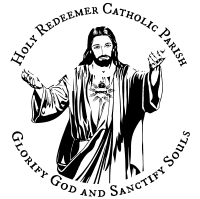The Eucharist, Part 9
Jesus Christ: Yesterday, Today, and Forever ~
Today we continue our twenty part series on the Eucharist. In case you missed the first three, you can find them here. This is in keeping with Archbishop Etienne’s pastoral letter on the Eucharist that you can find here (in case you missed it). Enjoy.
May God Bless You,
Fr. Thomas Nathe
Trent Horn, 20 Answers – The Eucharist. Catholic Answers Press. 2015
Get your own copy from Catholic.com
Question #9:
Was the Eucharist copied from pagan religions?
There are two kinds of critics who claim that the sacrament of the Eucharist was borrowed from pagan religions: anti-Catholic Protestants who believe that distinctly Catholic belief came from pagan mythology, and Jesus “mythicists” who believe that Jesus never existed and that anything related to him was borrowed from that same mythology.
Bart Brewer represents a position typical of anti-Catholic Evangelicals when he says that after the conversion of Constantine and the legalization of Christianity, “[new converts] brought with them pagan rites which they boldly introduced into the church with Christian terminology, thus corrupting the primitive faith.” But many of the “rites” the Church adopted are harmless customs, such as styles of vestments or temple architecture. (Protestants do the same thing when they exchange wedding rings, because this practice is not found in Scripture but is found in ancient Roman sources.) More to the point, we’ve already seen that the “pure and faithful” pre-Constantine Church Brewer speaks of did believe in the Real Presence of the Eucharist (along with many other distinctly Catholic doctrines).
The anti-Catholic author Jack Chick makes even more astounding assertions than Brewer in his tract about the Eucharist called The Death Cookie. Chick says the Eucharist was taken from Egyptian practice of worshiping the sun god Osiris in the form of “round sun-shaped wafers made of unleavened bread.” He even claims that the monogram IHS imprinted on the host stands for “Isis, Horus, and Seb, the gods of Egypt.” But Chick doesn’t footnote or document any of these claims, and for good reason – they are completely without merit.
First, Osiris was not the sun god (that title belonged to Ra), and so there were no “sun-shaped” wafers made in his honor, and reputable Egyptologists know nothing of Osiris being transubstantiated into a Eucharist. Second, the monogram has nothing to do with Egyptian mythology. I, H, and S are the first three letters in the Greek version of Jesus’ name. Finally, wafers and cakes offered in the Old Testament were presumable also round, but no Protestant would say they were pagan in origin (Gen. 18:1-8; Exod. 29:1-2).
The Jesus mythicists frequently quote the following passage from St. Justin Martyr: “He said, ‘This is my blood’; and gave it to them alone. Which the wicked devils have imitated in the mysteries of Mithras, commanding the same thing to be done. For that, bread and a cup of water are placed with certain incantations in the mystic rites of one who is being initiated, you either know or can learn.”
According to the mythicists, Mithraists celebrated the Eucharist long before Christians did and so Justin is ignorant of the fact that it was actually Christians who copied this sacrament from paganism, not pagans devilishly copying Christians. However, Mithraic scholar Manfred Clauss tells us that “there can be no question of imitation in either direction. The offering of bread and wine is known in virtually all ancient cultures, and the meal as a means of binding the faithful together and uniting them to the deity was a feature common to many religions. . . . The ritual meal was probably common to many religions. . . . The ritual meal was probably simply a component of regular common meals. Such meals have always been an essential part of religious assembly.”
St. Paul tells us that Christians took part in a communal meal before receiving the Eucharist (this was often called an agape feast or a “love feast”). Paul chastised the Corinthians for using such occasions to become drunk and gluttonous while others went hungry. Of course, Christians did not “borrow” the concepts of communal meal from pagans, since all people have a natural desire to share food in a communal setting. The Mithraic “communion meal” was simply that, a communal meal. Clauss writes, “Mithraists did not just receive bread and wine or water, as the literary sources seem to suggest, but were in addition served actual meals.”
More to the point, if there were any borrowing, it would be from Christianity to Mithraism, since the Roman Mithra cult came after Jesus and had no connection to the Persian Mithra cult that existed before the time of Christ.
Ironically, when fundamentalist Protestants and atheists make the “pagan-influence” argument they both make the same mistake. They strain to locate similarities between the Church and paganism and argue that it is always the Catholic Faith that came from paganism. They don’t admit that borrowing took place in the opposite direction, or that the similarities are superficial and so no borrowing took place at all.

